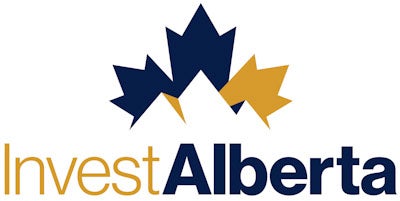
Carbon capture, utilisation and storage (CCUS) is increasingly viewed as an invaluable means to decarbonise heavy industries. Established mechanisms for decarbonisation – such as transitioning to renewables – are not always feasible for the more energy-intensive industries, furthering the need for CCUS.
For solutions to the CCUS challenges, the Canadian province of Alberta is making notable progress thanks to its strengths in oil and gas. Already home to four major CCUS projects, with many more in the pipeline, and an innovation centre working to extract CO2 more efficiently, Alberta is fast developing a world-leading carbon capture ecosystem.
How CCUS is developing around the world
Solutions for the capture, transport and storage or utilisation of CO2 from industrial processes are crucial for hard-to-abate industries to meet net-zero targets. Power generation is set to be a prominent adopter of CCUS and increasing numbers of projects are being greenlit.
A total of 436 CCUS projects worldwide are expected by 2030 based on announcements in Q1 2025, according to GlobalData analysis, representing a 53% year-on-year increase. Canada is a leading global location for the development of CCUS projects, as well as the necessary skills and expertise.
CCUS ecosystems emerge where carbon storage capacity broadly aligns with capture projects. However, there are multiple challenges to scaling CCUS. There are high capital costs for the project and the supporting infrastructure, coupled with running expenses.
In addition, there is often an energy demand with CCUS. Extra energy is needed to capture and store the carbon, which could also have a negative effect on the project’s economic viability. Furthermore, CCUS is dependent on support infrastructure such as pipelines to reach the storage or utilisation sites. Then there is a need for the right geological conditions for storage.
Development of CCUS in Alberta
The expertise of Alberta’s oil and gas sector lays a solid foundation for a CCUS ecosystem with key infrastructure already in place. Natural gas and oil operations in the region began in the 1910s and Alberta now has more than 26,000 oil facilities and 18,000 gas facilities. The province began investing in CCUS programmes and projects in 2015. Progress in CCUS has accelerated in recent years due to Alberta’s target of reaching carbon neutrality by 2050.
“Alberta is home to a high concentration of large industrial emitters,” says Rick Christiaanse, CEO at Invest Alberta. “This provides existing pipeline infrastructure, extensive geological data, and a skilled workforce for subsurface engineering and geology that are important for CCUS implementation in Alberta.”
There is also significant carbon storage capacity in the province with total volume in its saline aquifers and oil and gas reservoirs estimated to be over 100 billion tonnes, making it ideal for permanent carbon storage. Despite CCUS being a relatively new industry, Alberta already has more than a decade of commercial experience.
“Alberta is attracting a number of players in the CCUS space with new technologies aimed at commercial scale operations. Some of the attractiveness comes from the presence of Alberta Carbon Trunk Line (ACTL), Shell’s Quest CCS Project, Alberta Carbon Grid and Pathways Alliance,” adds Christiaanse.
The Quest project captures CO2 from the hydrogen plant at the Scotford Upgrader. Carbon is transported via a 65km pipeline, where it is then sequestered in an underground saline formation. The project went into commercial operation in 2015 and has since captured and stored approximately one million tonnes of CO2 every year.
Five years later, the Alberta Carbon Trunk Line went into operation. Owned and operated by Wolf Midstream, the 240km long pipeline can transport up to 14.6 million tonnes of CO2 a year and is multi-party and open access. This means that the pipeline can connect the CO2 of different emitters to various end uses and forms a key part of Alberta’s CCUS infrastructure.
The advancement and optimisation of technology is also necessary for a healthy ecosystem. The principal method for capturing post-combustion CO2 from flue gas is with amine-based solvents. The exhaust gas is piped through a tower and rises through an amine solution.
The other gases are released while the amine and CO2 are diverted to different chambers and separated by high-temperature steam. Although effective at removing 90% of the CO2 from the exhaust gas, there is high energy consumption. However, the Amine Intensification Project (AIP) by InnoTech Alberta has developed a process to use microwaves to heat less of the solvent and lower energy requirements by 75%. InnoTech Alberta owns the Alberta Carbon Conversion Technology Centre where AIP will be available for demonstration in 2026.
Looking ahead, more infrastructure capacity is set to go into operation. The TC Energy Alberta Carbon Grid CO2 Storage Project is currently in the feasibility stage and is due to go into operation in 2027 with a storage capacity of 2,000 metric tonnes. Pathways Alliance is seeking regulatory approval for a 400km transportation pipeline and 250km connecting pipelines to oil sands facilities in north-east Alberta, which is estimated to be operational by 2029-30.
A further promising development began in 2024. Entropy began construction on its Glacier Phase 2 in north-west Alberta, with the aim being the world’s first decarbonised gas plant through carbon capture. Completion of Phase 1 came in 2022, with a total CO2 capture capacity of 32,000 tonnes per annum. Phase 2 is expected to add 160,000 tonnes of capacity annually.
The support for CCUS and talent in Alberta
Few of these milestone projects would be possible without the strategic efforts of the Government of Alberta to provide a supportive policy framework. “Policy support has been extremely important for industry growth in the CCUS sector,” adds Christiaanse. “This is primarily due to high upfront capital costs, revenue uncertainty without strong carbon pricing, infrastructure requiring long-term planning, long-term liability and regulation, and market development for emerging technologies.”
The province is establishing a comprehensive regulatory framework for CCUS to ensure the technology is deployed safely and in an environmentally responsible way. Various aspects of CCUS projects are covered through existing oil and gas legislation. Specific CCUS legislation has also been approved such as the Carbon Capture and Storage Funding Act and the Carbon Capture and Storage Funding Regulation.
To mitigate the high capital expenditure costs, CCUS projects can generate offset credits through Alberta’s carbon regulation technology innovation and emissions reduction (TIER) policy. There are also federal incentive investment tax credits (ITC), which give up to 60% refundable CCUS capital costs for qualified projects. Credits can be combined with funding such as the Alberta Petrochemicals Incentive Program, Emissions Reduction Alberta, and the Clean Resource Innovation Network.
Alongside the regulations and supportive environment, the talent available is another key strength for Alberta in CCUS. There are the existing transferrable skills from the oil and gas workforce to CCUS. Companies investing in Alberta gain access to a pool of highly skilled workers.
Alberta’s academic institutions are also supporting CCUS with the University of Alberta and the University of Calgary contributing to research and discourse around the technologies and training or upskilling future talent.
Businesses operating in Alberta have an opportunity to work with the brightest academic minds to develop new solutions for CCUS. Notably, Calgary has the highest concentration of completed STEM degrees of any Canadian city. Evidence of the development of talent is that Alberta has the youngest workforce in Canada and is also highly educated with 73.8% of workers boasting a post-secondary certificate or university degree in 2024.
This multitude of factors, including talent, infrastructure, and industry experience, positions Alberta as a significant location to develop the vital CCUS solutions and scale up the global industry of tomorrow.
To learn more about what Alberta has to offer in industrial innovations, download the document below.




